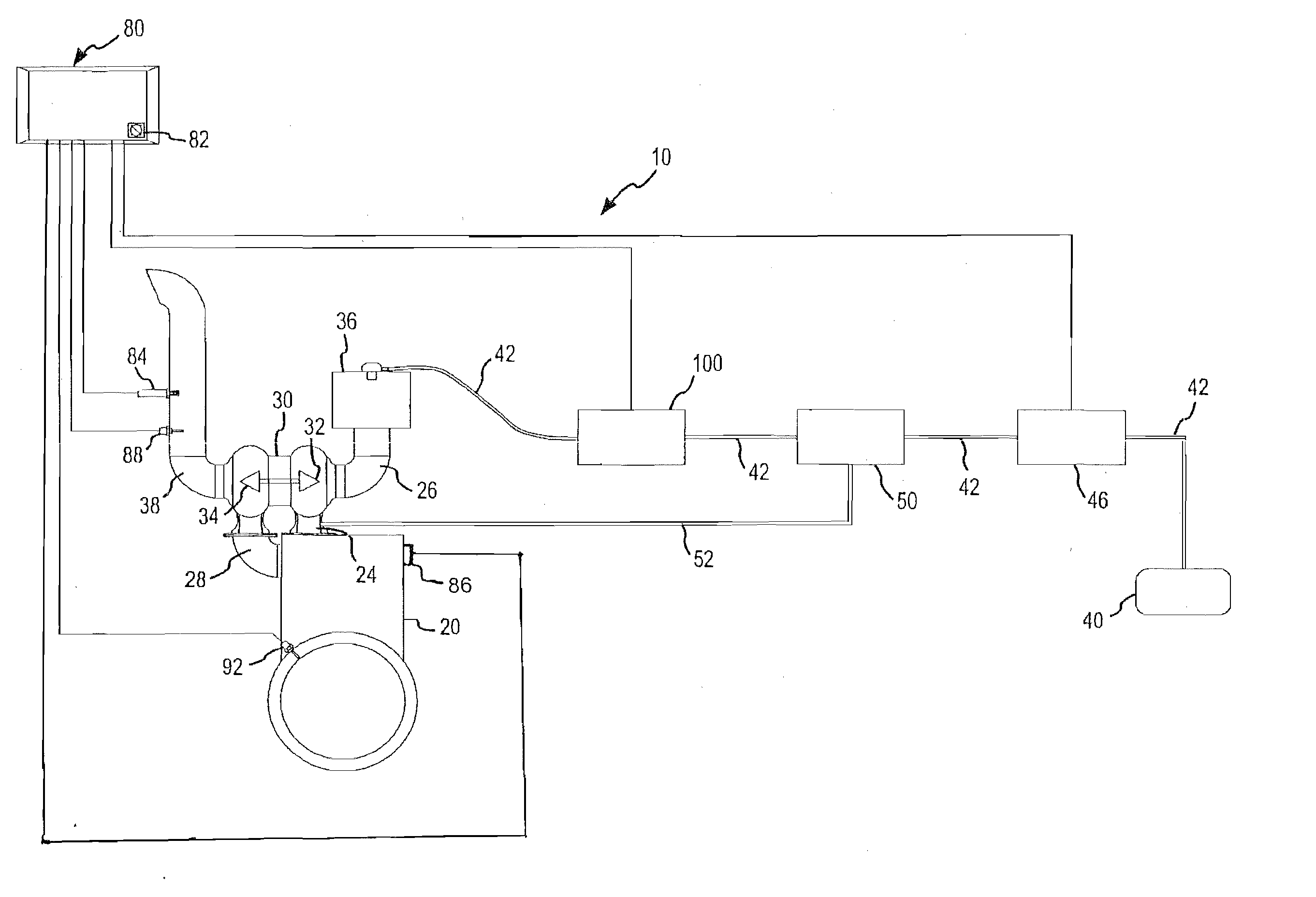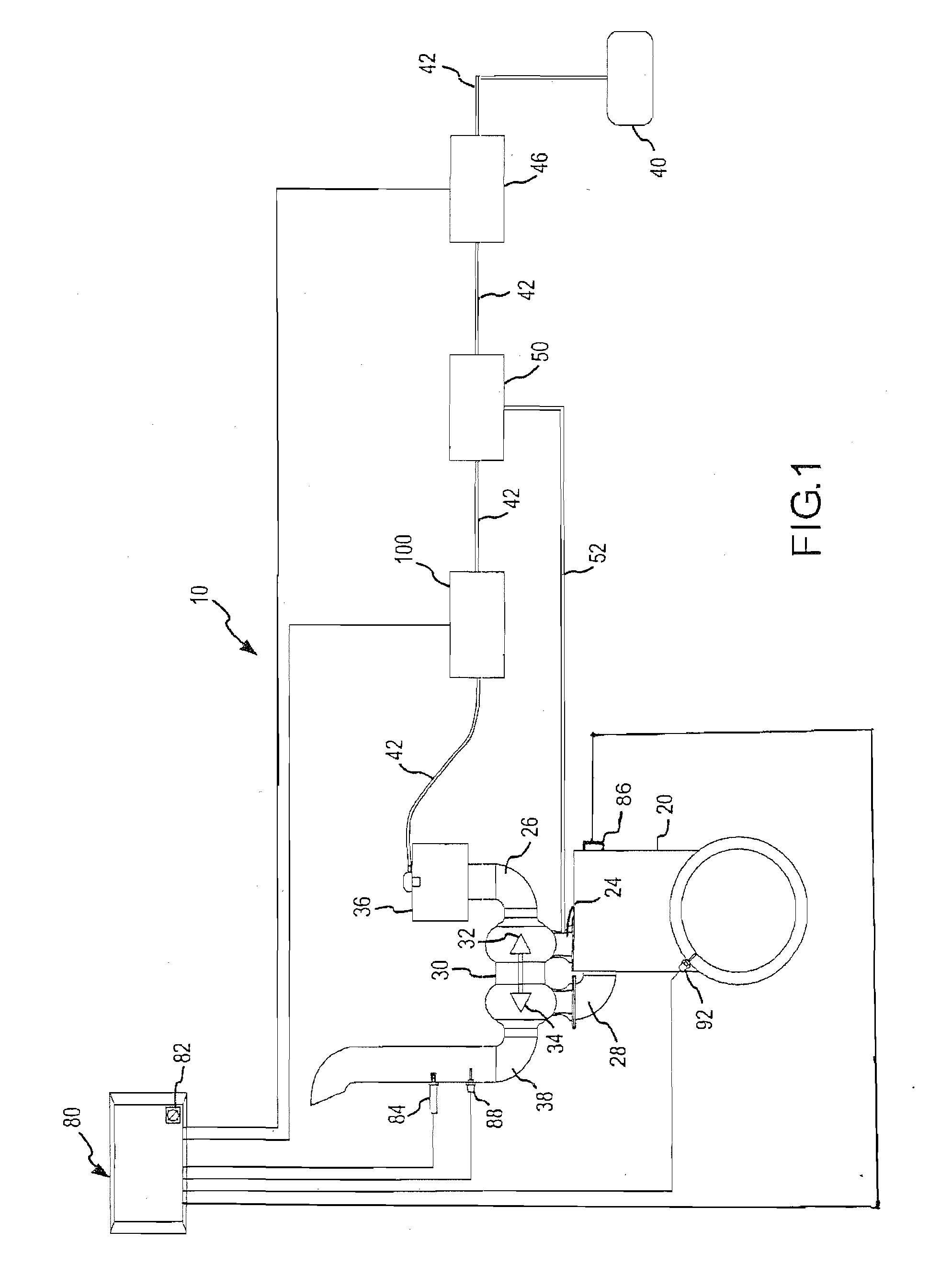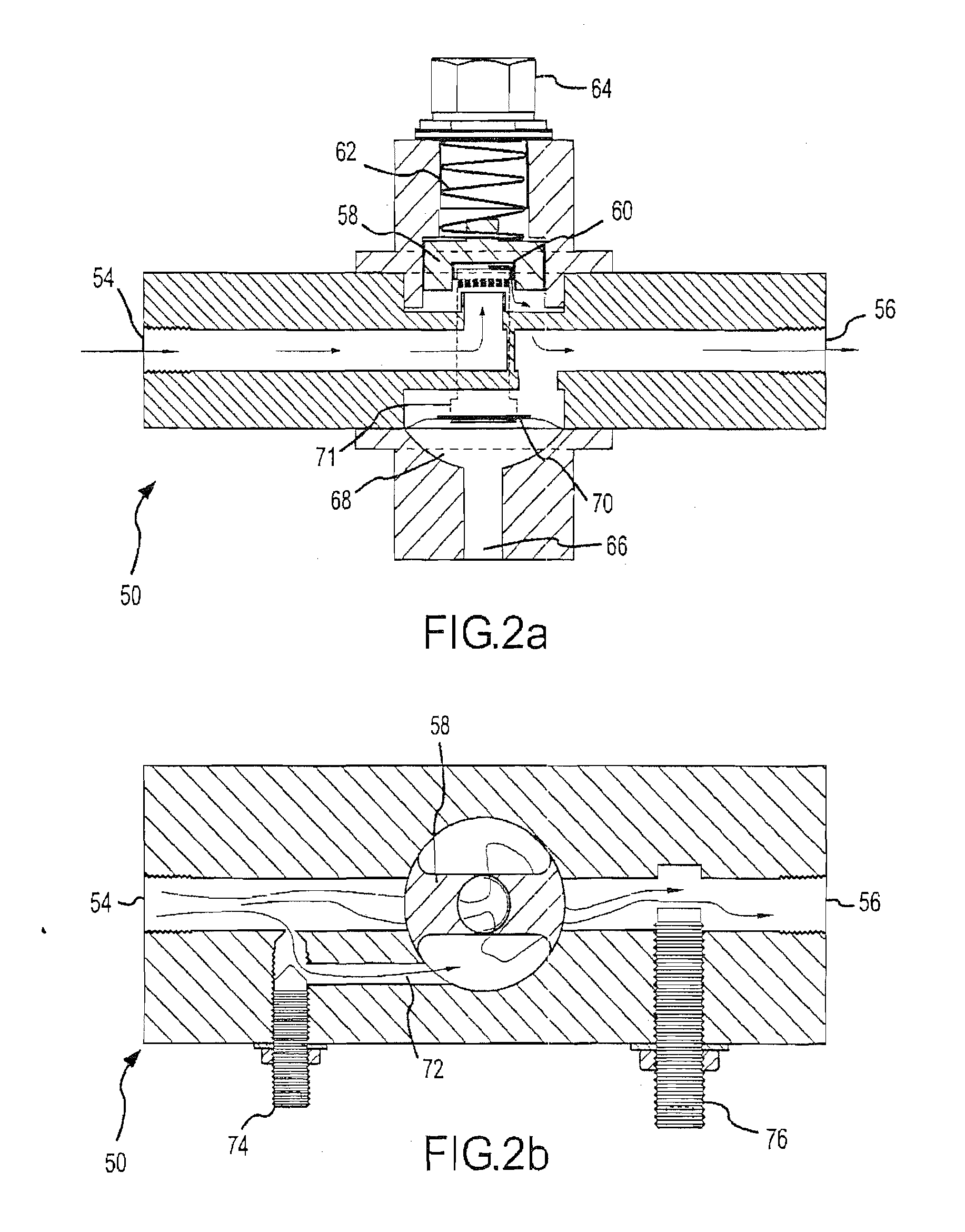Process for use with dual-fuel systems
- Summary
- Abstract
- Description
- Claims
- Application Information
AI Technical Summary
Benefits of technology
Problems solved by technology
Method used
Image
Examples
Embodiment Construction
[0029] The present invention will now be discussed in relation to the accompanying drawings, which at least partially assist in illustrating its various pertinent features. FIG. 1 shows a schematic view of a first embodiment of a dual-fuel fumigation system 10 interconnected to a turbocharged diesel engine 20. The fumigation system 10 is applicable to a variety of diesel engine applications and may be utilized in any of a variety of environments where diesel engines are utilized. For example, the fumigation system 10 may be utilized with stationary power generation systems as well as on-road and off-road diesel powered vehicles. That is, the system may be utilized with diesel engines designed to operate at a set load level as well as with diesel engines having varying load requirements due to, for example, idling needs, acceleration needs, cruising needs, etc. Furthermore, it will be noted that the fumigation system 10 is discussed in relation to its applicability to turbocharged di...
PUM
 Login to View More
Login to View More Abstract
Description
Claims
Application Information
 Login to View More
Login to View More - R&D
- Intellectual Property
- Life Sciences
- Materials
- Tech Scout
- Unparalleled Data Quality
- Higher Quality Content
- 60% Fewer Hallucinations
Browse by: Latest US Patents, China's latest patents, Technical Efficacy Thesaurus, Application Domain, Technology Topic, Popular Technical Reports.
© 2025 PatSnap. All rights reserved.Legal|Privacy policy|Modern Slavery Act Transparency Statement|Sitemap|About US| Contact US: help@patsnap.com



